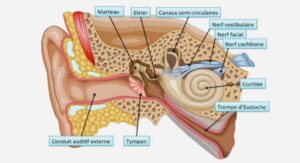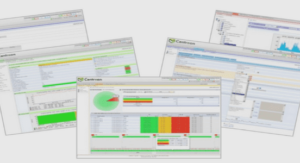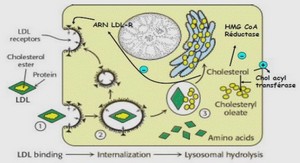Surpoids et obésité
According to the World Health Organization (WHO), in 2016, 39% of adults aged 18 years and over were overweight and 13% were obese. [1] This illustrates the epidemic that has been gradually striking the world for thirty years. [2] An excessive body weight is a risk factor of many acute and chronic health diseases (e.g., musculoskeletal injury, diabetes, cardiovascular diseases) [3,4,5]. As other western countries France is hit by this phenomenon. Conducted in 2012, Obépi is the most recent national study that documented the increase of overweight and obesity in France. Among French adults, respectively 32.3% and 15% were overweight and obese. The rate of overweight was higher for men (38.8%) than for women (26.3%); however, women were more likely to be obese,15.7% versus 14.3%. [6] Despite body fat standards and physical fitness requirements, many nations deal with this public health problem in their Armed Forces. Especially as overweight and obesity among active duty military personnel impact operational effectiveness. [7,8,9] In 2011, 51.2% of the United States (U.S) active duty personnel were classified overweight and 12.4% obese, most of those were male (13,5% among men vs 6,4% among women). [10] While accessing in the French Army, any obese with a waist circumference at risk is deemed medically unfit for service. [11] Only few studies have been conducted to evaluate the French military weight status. In 2003, EPIMIL was the main one. It studied prospectively overweight and obesity on 2045 gendarmes and republican guards (military status). It highlighted almost 40% of overweight and 8% of obesity (all male). [12] The purpose of this study was to assess the prevalence of overweight and obesity in 2017 in all military services in the south east region. Based on the collected data, selected sociodemographic factors were considered in association with overweight and obesity in order to evaluate active military population and identify targeted prevention groups.
Data source, sampling and data collection
A cross-sectional study with prospective collection was carried out between September 2016 and April 2017. The source population was the active duty (AD) members serving in units reporting to the French Regional Military Health Department of Toulon (Var – France) and who underwent for regular medical check-ups during the study period. All data were gathered through a single anonymous questionnaire. The patient filled the sociodemographic variables: gender, age, service, rank, physical activity and actual protein supplement intake. The usual medical care data were filled by military paramedics and by the medical officer: any history, treatments, height, weight, waist measurement and medical fitness data. In the survey, height and weight were measured respectively with a height gauge in centimeters (cm) and with a standard scale in kilograms (kg). The waist measurement in cm, was assessed at midway between the top of the hip bone and the bottom of the ribs. Survey and data collection method have been approved by the Marseille Military Hospital Ethics Committee. Data collection and capture have been centrally managed with respect to medical secrecy. A double capture has been driven to avoid capture mistakes. Data capture has been carried out on Excel (version 15.14). All questionnaires sent back by medical officers have been captured. The exclusion criteria were the absence of sex, height or weight, current pregnancy or reservist status. Instead of excluding participants with missing data or variables, these ones were classified as “unknown/missing”.
Measures
Main outcome measures were overweight and obesity among AD military personnel using BMI (calculated as weight divided by height squared). Military personnel were categorized as underweight (BMI < 18,5 kg/m²), healthy weight (18,5 ≤ BMI < 25 kg/m²), overweight (25 ≤ BMI < 30 kg/m²) or obese (≥ 30 kg/m²). Waist circumference is another indicator of the internal fat deposits and is an independent risk factor for cardiovascular diseases (myocardial infarction, stroke…) and cancers. The International Diabetes Federation (IDF) established standards of 94 cm for men and 80 cm for women. [13] 6 Variables considered for association with overweight and obesity were: sex, age, service, rank and physical activity. The weekly physical activity included physical practice at work and outside work. The amount of weekly physical activity was divided in 3 groups: less than 2 hours per week, 2 to 4 hours per week or more than 4 hours per week. Prevalence of high blood pressure (HBP), diabetes and dyslipidemia was studied by sex, age and BMI. HBP is defined by a blood pressure steadily higher than 140mmHg for systole and 90 mmHg for diastole. Diabetes is a metabolic condition of having higher than normal blood sugar levels. The fasting plasma glucose diagnostic threshold for diabetes is 7.0 mmol/L (126 mg/dL). Dyslipidemia is a disorder of lipoprotein metabolism, manifested by elevation of the total cholesterol, the low-density lipoprotein cholesterol or the triglyceride concentrations.
Demographic characteristics
One thousand five hundred eighty-nine (1589) AD service members have been included in this study, namely 90% of the questionnaires. Demographic characteristics of participants by sex and the total population are presented in table 1. To sum up, the considered population was predominantly male (86.4%), relatively young with an average of 35.7 (+/- 9.4) years old. Seventy per cent of the considered belonged to the Army or to the Gendarmerie. It was mainly composed of non-commissioned officers (55%). Most of the study’s soldiers were sporty with 63% declaring at least 2 hours of physical activity per week. The majority didn’t take protein supplement. 7 Female military were younger, majority in the Army Health Service (54%) and their total weekly fitness time was smaller than men’s (37% practicing less than two hours per week). Table 2 examined BMI categories and waist measurement within demographic and military groupings. There were only 8 underweight members, mostly women (7). The overall prevalence of normal weight, overweight and obesity was respectively 50.8%, 38.7% and 10%. The mean BMI of the study population was 25.4 kg/m². Female military had low rates of overweight and obesity, respectively 19% and 5.1%; whereas there were two times bigger among the male active components with 41.7% and 10.8% respectively (table 2.a). Mean waist circumference was 78.2 ± 9.1 cm for women and 89.1 ± 10.5 cm for men. A third of female military and a fifth of male military had a measure bigger than the standard IDF. Of note, almost 20% of women and men had a missing waist measurement. Less than 5% of the healthy weight military had a waist measurement at risk and nearly 30% of the overweight AD members had a waist measurement bigger than the standard IDF. Almost all obese members had a measurement considered at risk. Excess of body fat increases with age and is predominant from 35 years old, as shown in figure 2. The combined rate of overweight and obesity was 55.6% in the 35 – 44 years group; 67.4% in the 45 – 54 years group and 50% of the 55 – 64 years’ group. With regard to services, the most concerned were Gendarmerie, the Army and the Navy.
Overweight and obesity – assessment among French Military Personnel in the South |



